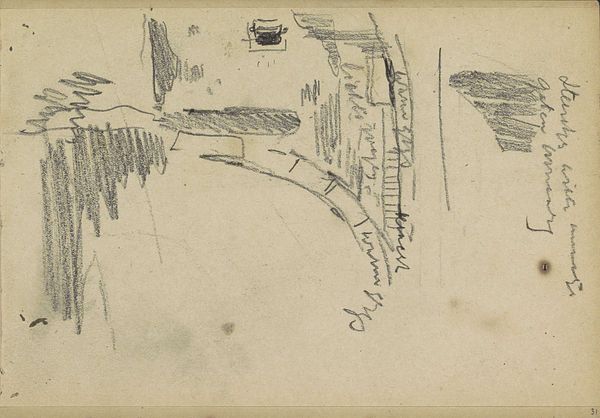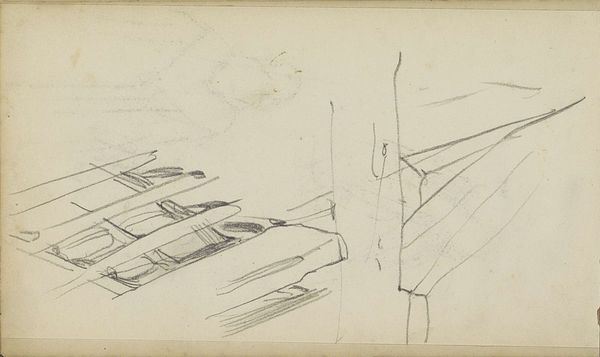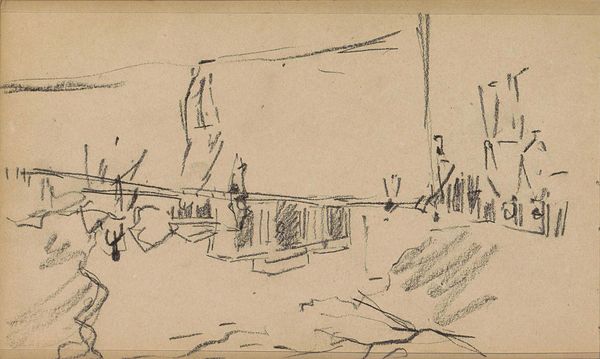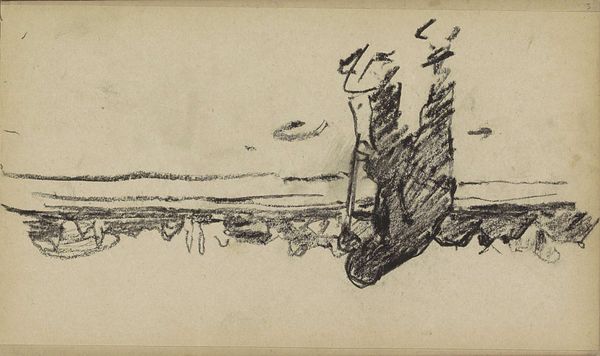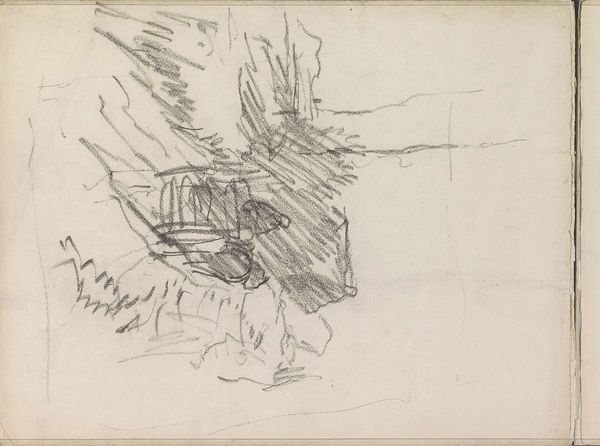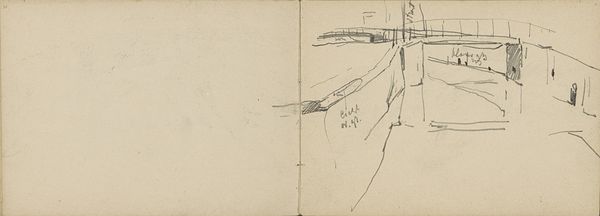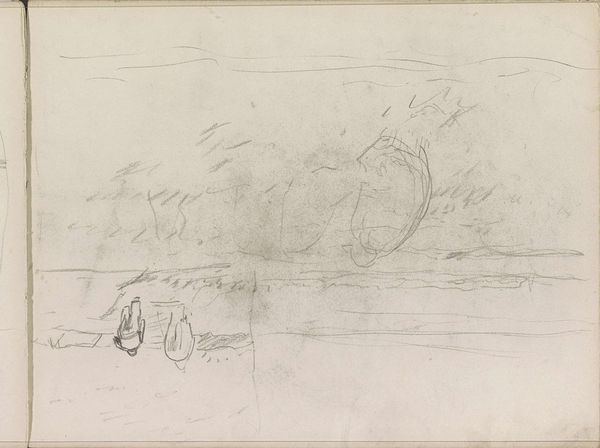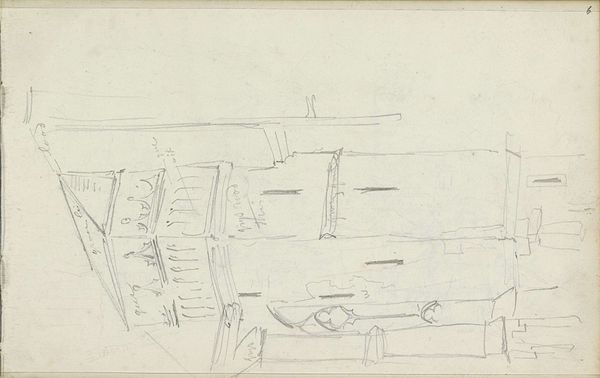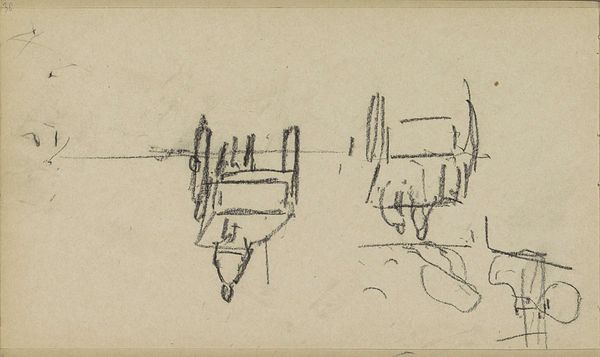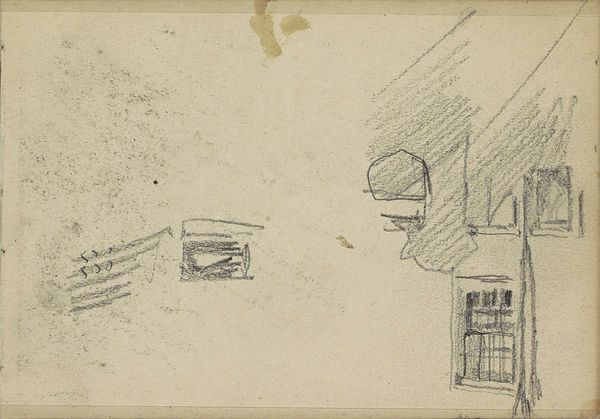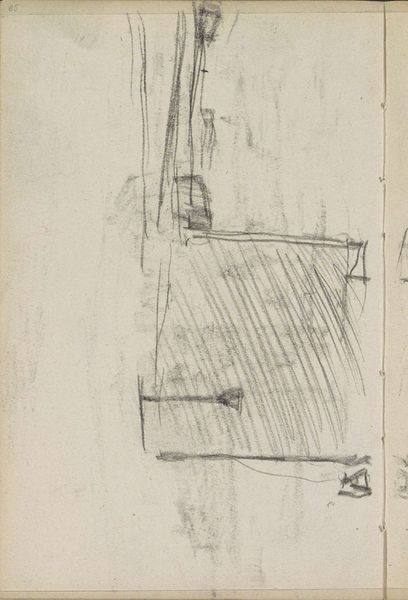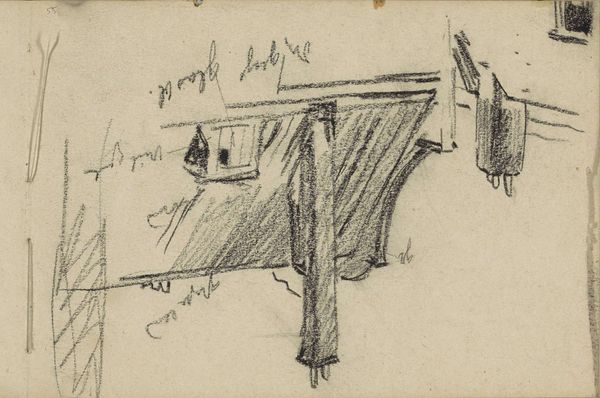
Copyright: Rijks Museum: Open Domain
Editor: Here we have Willem Witsen’s “Gezicht op de brug Lekkeresluis te Amsterdam,” dating roughly between 1870 and 1923. It’s a drawing using graphite. There’s something quite stark and fragmented about it; it feels more like a fleeting impression than a complete picture. What catches your eye in this sketch? Curator: It's the bridge itself, or rather, the fragmented portrayal of it, that resonates. Bridges, historically and symbolically, connect disparate spaces. What narratives did Witsen intend to bridge, or perhaps question, through his sketch? Are there particular elements that stand out? Editor: The upper-right area is quite dense and dark. Maybe it suggests some industrial element looming over the more delicate bridge? Curator: Precisely! Darkness, psychologically, is often linked with the unknown, the hidden. This juxtaposition invites questions about Amsterdam's transition. Was Witsen aware of Amsterdam's burgeoning modernity overshadowing something more traditional? How did he respond to that changing sense of place? Editor: That makes me consider how intentional this incompleteness may be. Perhaps Witsen sought to capture not just a place, but the ephemeral feeling of a place in transition. Curator: Exactly. And think of the artistic trends swirling at the time: Impressionism, early Modernism... a fracturing of traditional representation in search of emotional or psychological truth. Do you think Witsen achieves a sense of authentic emotional and psychological significance in this image? Editor: Absolutely. The starkness makes it memorable, more thought-provoking than if it were painstakingly rendered. This sketch has definitely made me think differently about how artists can use even the simplest forms to explore complex ideas about memory and place. Curator: Indeed. The sketch embodies cultural memory and reminds us of our shared experience when art, artist, and subject interact.
Comments
No comments
Be the first to comment and join the conversation on the ultimate creative platform.
